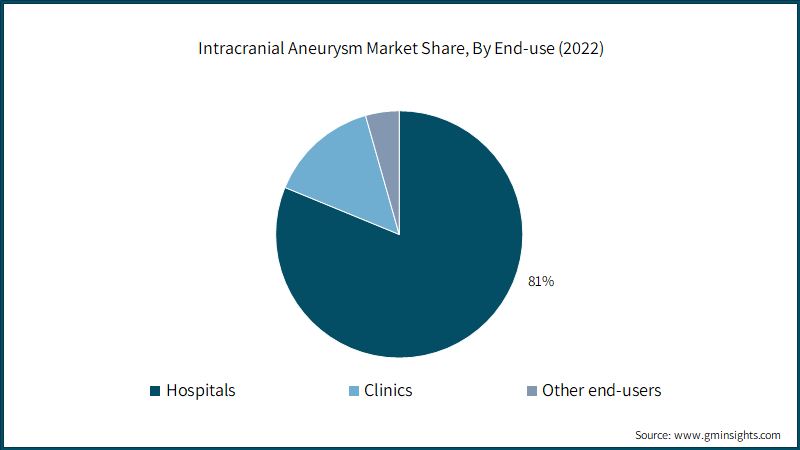Home > Healthcare > Medical Devices > Surgical Devices > Intracranial Aneurysm Market
Intracranial Aneurysm Market Analysis
- Report ID: GMI7061
- Published Date: Oct 2023
- Report Format: PDF
Intracranial Aneurysm Market Analysis
The market by treatment type is categorized into endovascular coiling, surgical clipping, flow diverters, and other treatment types. The endovascular coiling segment garnered USD 854.7 million revenue size in the year 2022.
- Endovascular coiling is a less invasive alternative to traditional surgical clipping. This approach involves inserting a catheter through the arteries, typically via the femoral artery, and guiding it to the aneurysm site. The minimally invasive nature of coiling leads to reduced surgical trauma, shorter hospital stays, and quicker recovery times for patients.
- Furthermore, endovascular coiling has been associated with better patient outcomes compared to surgical clipping in certain cases. It reduces the risk of complications such as infection, brain damage, and post-operative bleeding. Patients often experience less pain and discomfort, which has fueled the growth of endovascular coiling.

The intracranial aneurysm market by end-use is categorized into hospitals, clinics, and other end-users. The hospitals segment garnered USD 1 billion revenue size in the year 2022.
- Hospitals house specialized neurosurgeons, neurointerventional radiologists, and healthcare teams experienced in the diagnosis and treatment of intracranial aneurysms. These experts are essential for delivering high-quality care and conducting complex procedures such as endovascular coiling and surgical clipping.
- Additionally, hospitals have access to advanced medical equipment, including angiography suites, MRI machines, CT scanners, and surgical suites equipped for intracranial aneurysm treatment. These facilities are necessary for accurate diagnosis and interventional procedures. This is anticipated to boost the segment expansion.

North America intracranial aneurysm market accounted for USD 433.8 million revenue size in 2022 and is predicted to witness substantial market growth over the analysis timeline.
- North America, including the U.S. and Canada, has a significant burden of intracranial aneurysms, partly due to lifestyle factors like smoking and hypertension. This high prevalence drives the demand for diagnosis and treatment.
- Furthermore, North America boasts advanced healthcare infrastructure, with access to state-of-the-art medical facilities, diagnostic technologies, and a skilled healthcare workforce. These resources are critical for the accurate diagnosis and treatment of aneurysms, contributing to the regional growth in the market.

